Taiwan Intelligens Of Precarity
Recent studies on future precarity explore how individuals cope with unstable conditions intertwined with the broader temporalities imposed by modernity. In contrast to the optimistic progress and idealistic visions of utopia in the modern era, the “future” in today’s globalized world is an uncertain, precarious, and contested space, where conflicting values coexist amid instability and even tension. The concept of “precarity” 1 extends beyond unstable labor or economic volatility. Anthropologists and sociologists examine how, through interpreting it, we can understand how life adapts and transforms in our collective, uncertain, and fragile future, establishing a resilient and self-governing island world.
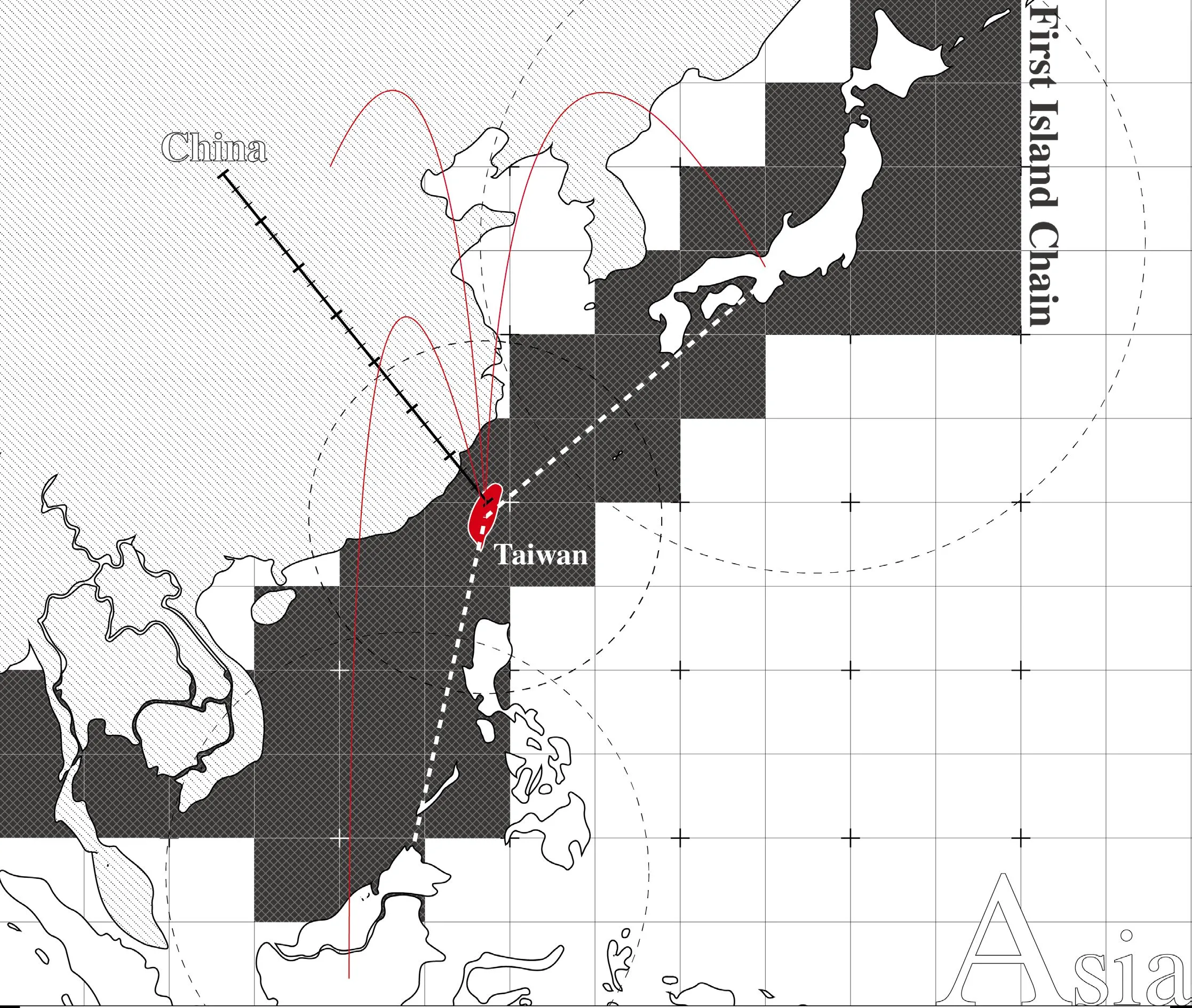
Taiwan, as a contact zone, is not only marked by political instability and ecological vulnerability between two tectonic plates but also by a tension between openness and closure. It serves as a meeting point for diverse diasporas, nations, and corporations, creating layered practices and intelligences. On the international platform of the Venice Biennale, “Taiwan Intelligens of the Precarity” 2 presents examples and prototypes for global resistance to authoritarianism and climate change adaptation.
Taiwan’s geography, ecology, and culture deeply reflect the tension between openness and closure, which lies at the core of its island and architectural identity. Positioned at the center of the First Island Chain of the East Asian tectonic plate, Taiwan embodies the paradox of being both isolated and connected. Its colonial history under globalization created a microecosystem and social spaces shaped by the dynamics between conquerors and the conquered. This also reflects a paradox in the democratization process discussed by Chantal Mouffe, balancing freedom and equality. “Taiwan must maintain a state of ambiguous semi-sovereignty, always on the edge of war, yet never fully prepared for total conflict”3. Living in a semisovereign state that is denied formal international recognition, 24 million people have built a home on this island.
Just as our curatorial architectural team has proposed various architectural examples and paradigmatic shifts, architecture can serve as a powerful tool for establishing stronger, more open, and more responsible mechanisms in the face of global political and natural instability. Taiwan can be seen as a big house composed of numerous islands, cities, and rooms, positioned within an unstable political and natural environment. We propose that multi-scalar architectural research and prototypes, developed within our collectively created island environment, are key to addressing the global crises of climate change and systemic injustice. “Taiwan Intelligens of Precarity” offers inspiration and guidance for the dispersed inhabitants navigating this unstable world.
Contemporary Taiwanese architecture addresses key issues in island studies, focusing on narratives that move beyond nationalist discourses4. It engages with the instability and precariousness of Taiwan, exploring themes like “territorialization—de-territorialization,” “nationalization— de-nationalization,” and “colonization—de-colonization.” Taiwan’s approach combines flexibility, diversity, and democratic values, offering wisdom for navigating global instability. This intelligence fosters an open, responsible, and co-created environment for diasporic communities in a drifting world.
For example, we interpret Taiwan’s built urban environment as an assemblage of localized contact zones interconnected by digital technology-zones that embody the democratic paradox described by Chantal Mouffe and have been filtered through the colonial legacies of insular and maritime geographies. Alternatively, the high-speed rail (HSR) that connects the entire west coast urban complex can be seen as an agit-prop vehicle for national political propaganda and a tool for territorial measurement. The slices, condensed under the faith in high speed, stand in contrast to the microcosm of Taiwan as explored in the “Tainan Blockology” of everyday life.
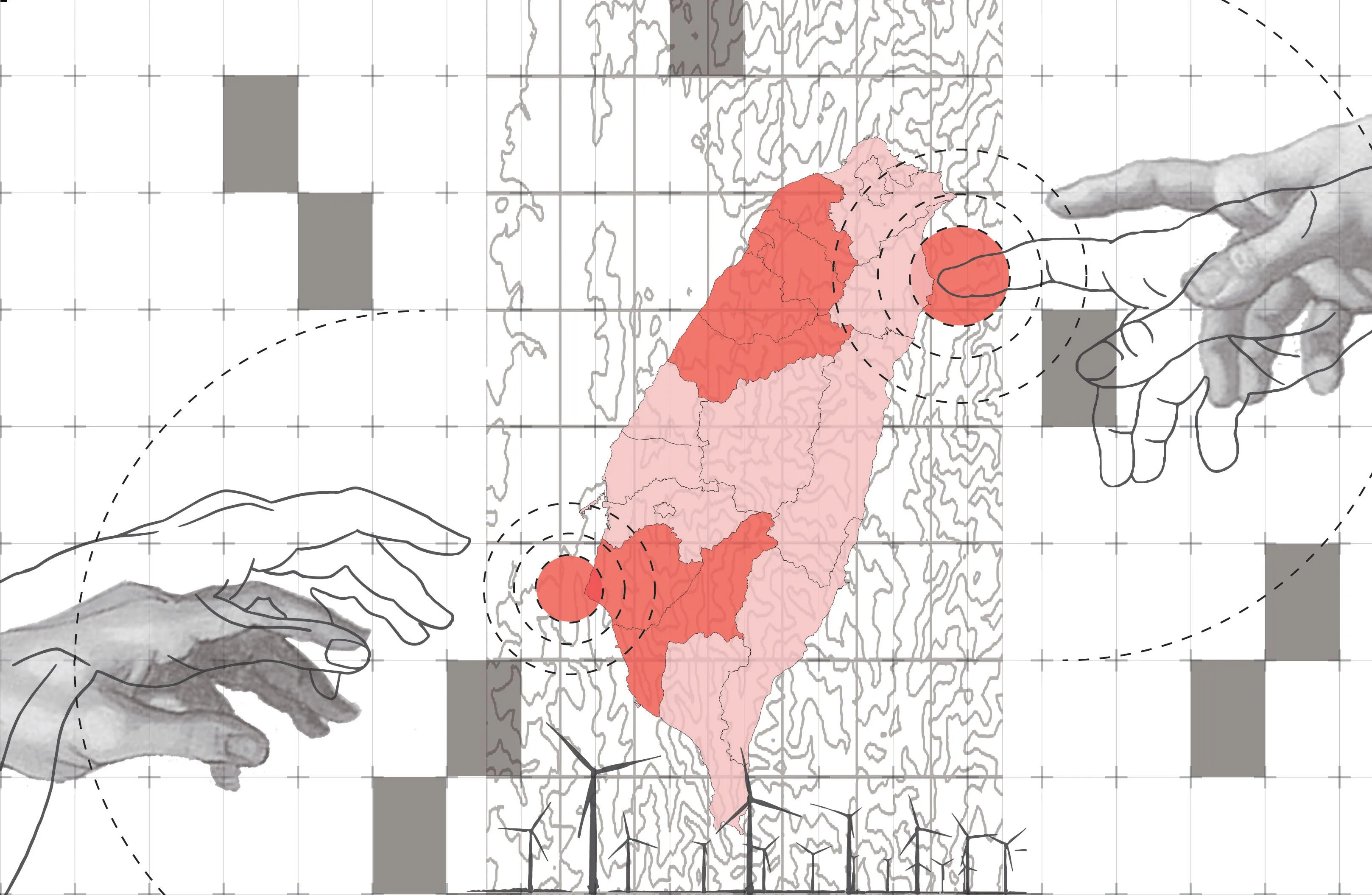
The Taiwan Pavilion aims to explore the relationship between contemporary architecture, technology, development, and environmental sustainability, presenting contemporary design thinking while reflecting on the intersection and reflection with the environment, society, and culture. For this exhibition, centered around the Department of Architecture at National Cheng Kung University, we have gathered renowned architects, designers, and student research teams from Taiwan. Together, under the theme of “NON-Belief,” we aim to construct an “ambiguous” area of binary dialectics between “belief” and “non-belief” that is intrinsic to Taiwanese society and everyday life. This reflection will present the manifestation of Taiwan’s “intelligens” and respond to the 19th Venice Architecture Biennale’s main theme: Intelligens. Natural. Artificial. Collective.
The theme spans from the scale of the island of Taiwan, to the region, to the everyday life of urban society. These interconnected and layered scales form an ecological system that flows seamlessly across dimensions, with each layer influencing and interacting with the others. Within this interconnected ecosystem, each element affects one another and collectively drives Taiwan’s multiple beliefs under the development of technology and society.
The exploration will focus on three aspects:
Efficiency: NON-Belief in High-Speed explores the global trend of pursuing efficiency and rapid development. Using Taiwan High Speed Rail as the case study, the exhibition proposes a reflection on the urban ecology within the metropolitan areas constructed by the high-speed railway and amidst Taiwan’s rural-urban gap.
Technology: NON-Belief in Chips explores the beliefs in the two polarized and contradictory mythologies of the “techisland” and the “eco-island,” as well as the hidden costs of green energy under the shade of solar panels, reflecting on research related to climate justice and new energy-driven typologies.
Control: NON-Belief in Sensory-Motor explores the various subtle relationships in our everyday lives, reviewing the different kinds of ecological, cultural, and social conflicts within the extended context, encompassing NON-Belief in hegemonic empires and flourishing through in-between tactics, based on understanding the city as a human sensorymotor system.
Architectural creation is carried out between the revealed themes of “belief” and “NON-Belief,” using tangible design proposals to drive deeper research and reflection, forming a collective collaboration.
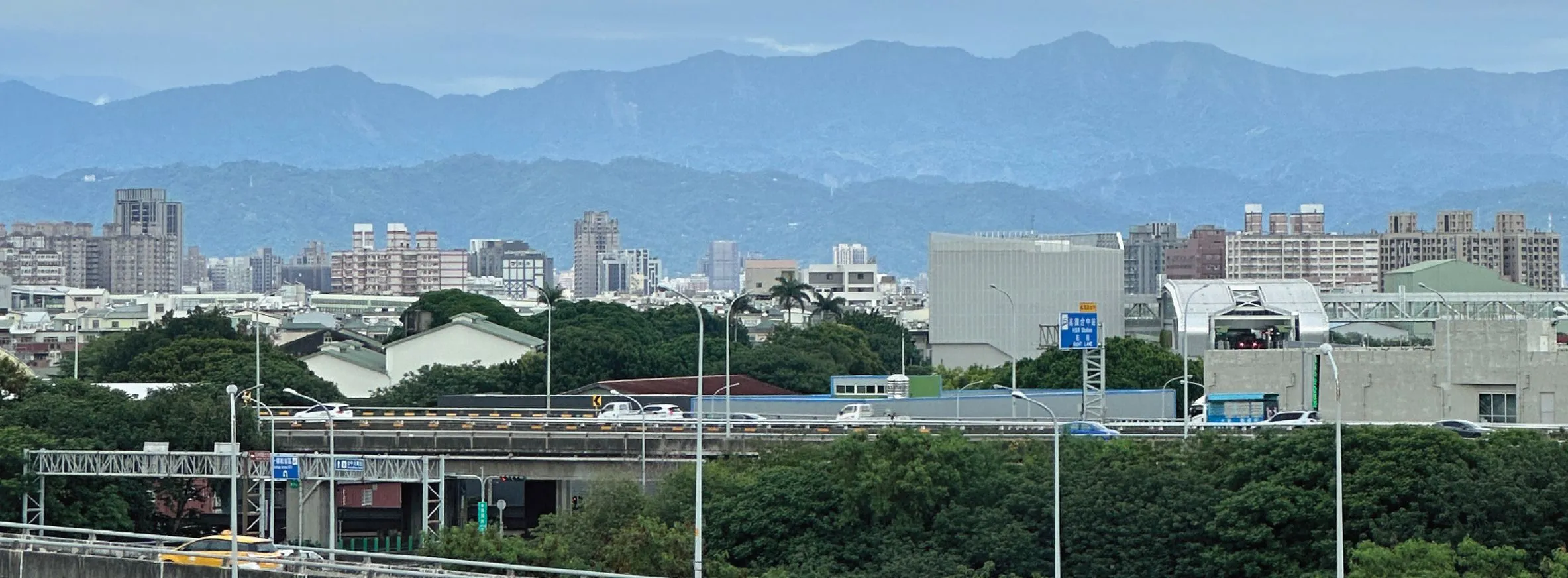
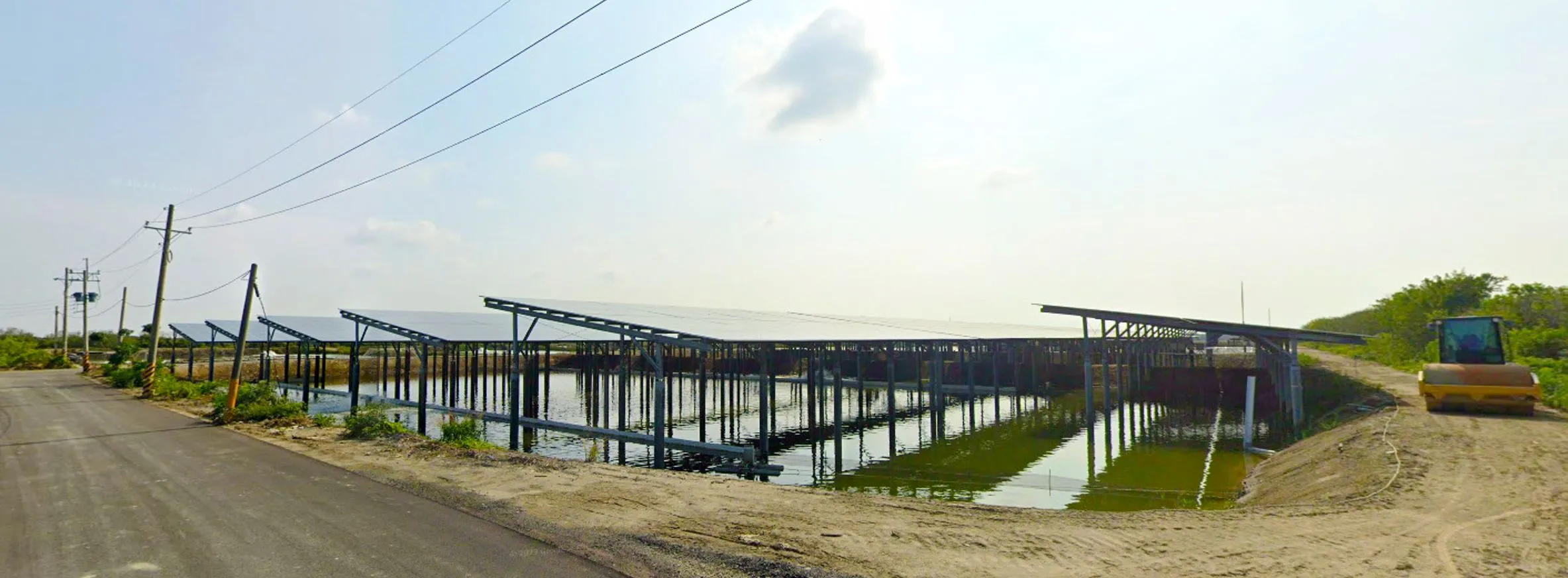

EFFICIENCY: NON-BELIEF IN HIGH-SPEED
Taiwan’s urban development has always aligned with industrial and social trends. The high-speed rail system, along with Taiwan Railways and highways, creates a 96-minute daily living circle across the western part of the island, greatly improving quality of life. However, what distortions arise from this convenience? What have we exchanged for this belief in convenience? Is it truly equivalent?
The high-speed rail is intertwined with the island’s history of transoceanic connections, earthquakes, and geopolitics. It runs through the urban corridor along the western coast, where a fragmented land-use pattern forms between Taipei and Kaohsiung on a gently sloping plain. This area has high productivity, with high-tech factories producing nearly half of the world’s semiconductor chips amid irrigated agricultural landscapes. The colonial metropolitan system, based on resource extraction and labor control, shaped the island’s development. Today, resource redistribution occurs through technology transfer, foreign labor, and evolving democratic consensus. The high-speed rail accelerates local homogenization, uneven urban-rural resource distribution, and the replacement of rural and ecological spaces with new developments like parking lots, malls, and luxury apartments.
Taiwan’s high-speed rail connects the island’s “big house,” linking dense urban “rooms” on a high-productivity agricultural / industrial plain, at the edge of climatic, geological, and political fault lines. Internally, it connects the island’s communities; externally, it represents successful economic development. The rail lines extend sensory movement, crossing layers and measuring Taiwan’s spatialtemporal dynamics, embodying prefigurative politics. This demonstrates a future social model and offers valuable intelligence for global social movements and political reforms.
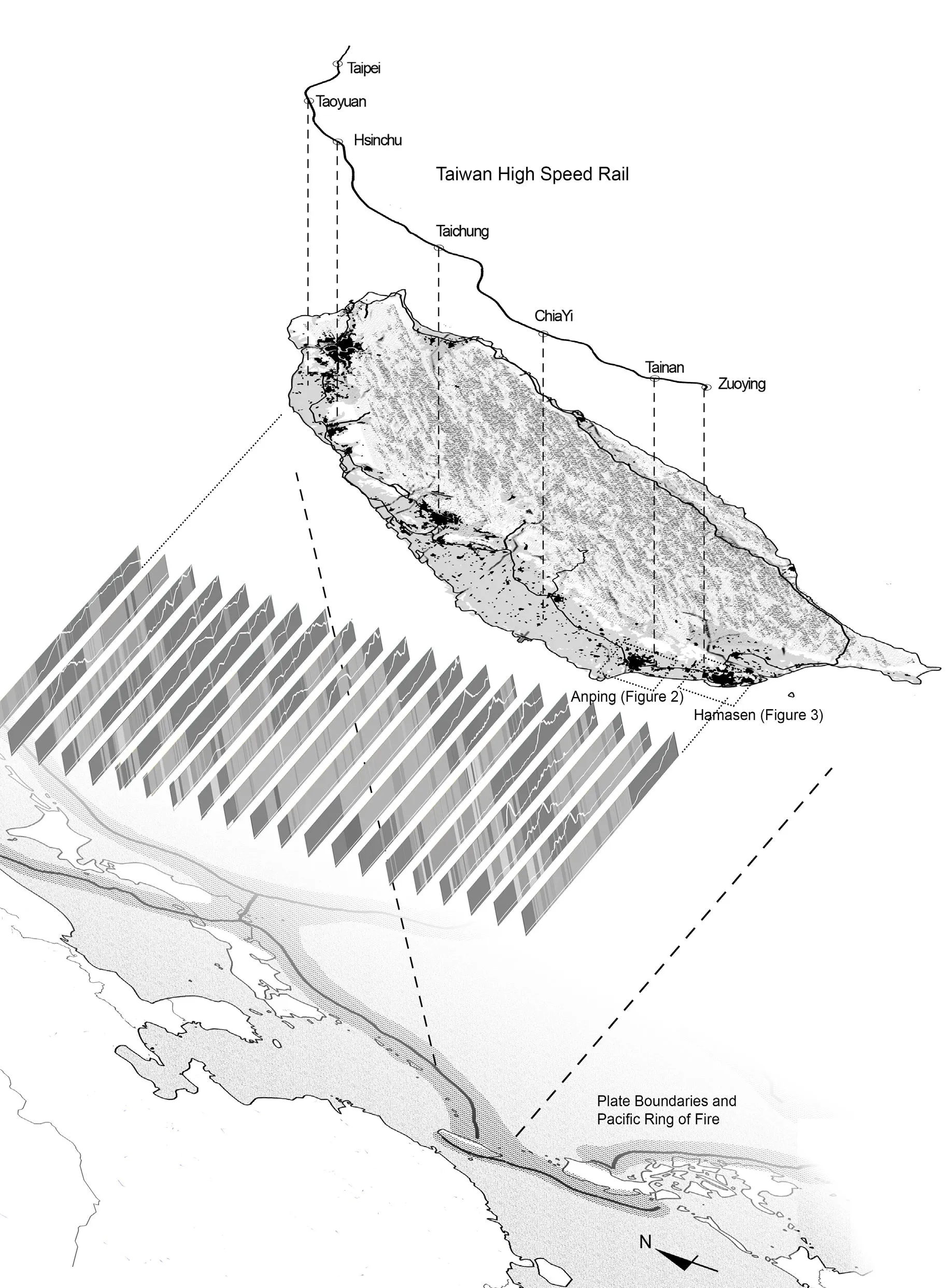
TECHNOLOGY : NON-BELIEF IN CHIPS
Taiwan plays a crucial role in the global technology industry, but beneath this confidence and pride, it also faces numerous contradictions and challenges In the semiconductor industry, Taiwan provides strong support for global advancements in artificial intelligence and high technology. However, behind this confidence and pride, Taiwan also confronts issues of energy demand and transformation; furthermore, despite its leadership in the technology sector, Taiwan holds in a highly sensitive and fragile geopolitical position.
When addressing climate change and energy transformation, can the promotion of green energy truly achieve ecological sustainability? Behind the data-driven approach to carbon emissions, the nation is fully committed to transitioning its traditional power generation system to green energy. While power generation data may meet Taiwan’s electricity demand, what is the tangible environmental reality behind the belief in net-zero? How should the balance be weighed between the extreme myths of “tech island” and “ecological island”? Behind the belief in high stock prices and profits, the collective costs borne by Taiwan include the limited distribution of water and energy resources, the extensive coverage of lowlying wetlands with solar panels, fish farming ponds, and irreversible ecological damage, among other issues.
In this context, Taiwan, as both a technological powerhouse and an island deeply connected to nature, faces the challenge of reconciling these dual identities. These issues not only challenge Taiwan’s future but also raise broader questions: how should the island country, Taiwan, navigate the complex global landscape between technological advancement, environmental sustainability, and geopolitical security?
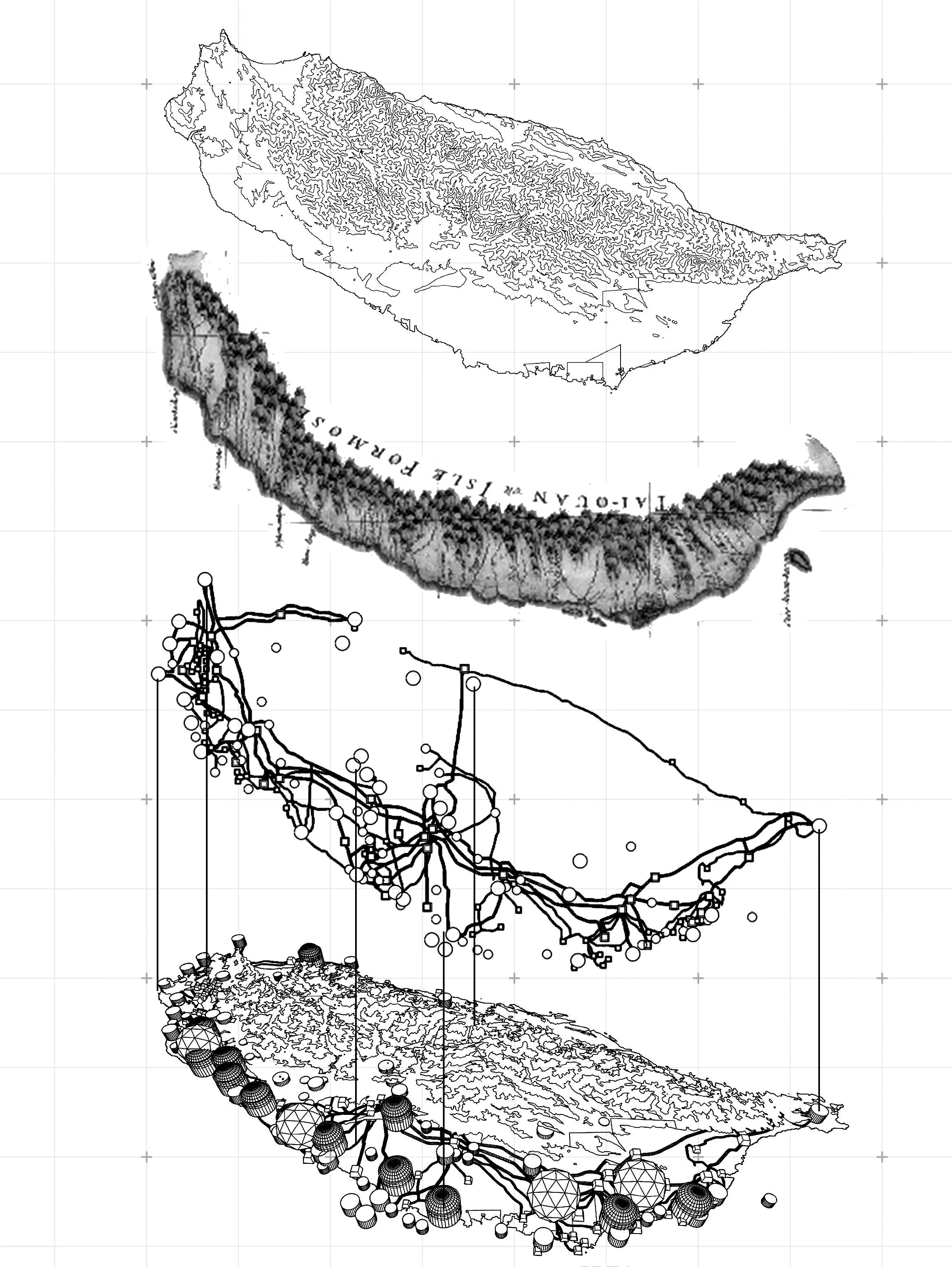
CONTROL : NON-BELIEF IN SENSORY-MOTOR
Bodily perception and control within collective consciousness, especially how sensory experiences and movement coordination are enhanced within a group. With the rise of short-video media, the flattening of information has led people to lose their deep connection with urban and architectural spaces. This passive reception and templatedriven image creation prompt us to rethink the body’s role in daily life and how urban and architectural spaces serve as areas for interaction between the body and environment.
Architecture and urban design focus not only on relationships but also on subtle daily interactions at the bodily scale. The exhibition reveals urban boundaries and neighborhoods as social, cultural, and economic transition zones, affecting the body’s perception and actions. Railways once divided cities, resulting in gentrification and injustices in public spaces. Today, we face reversing these inequalities. In these spaces, the body’s perception, emotions, and movements transcend geographic boundaries, showcasing a resilient fluidity.
Our bodies construct various perceptions, emotions, movements, and connections within these spaces. Bodily perception and memory coexist with the changes in urban space. Conscious attention awakens memory, perception, and movement, linking personal and collective experiences, and creating new realities. Returning to the city, through the lens of a third-party medium, can we re-examine everyday scenes? How can we combine dynamic bodily perception with innovative imagery, making the audience participants in sensory experiences, not just passive viewers? This reconstructed visual experience helps us explore deeper layers of perception, re-examining and experiencing our daily life and surroundings.
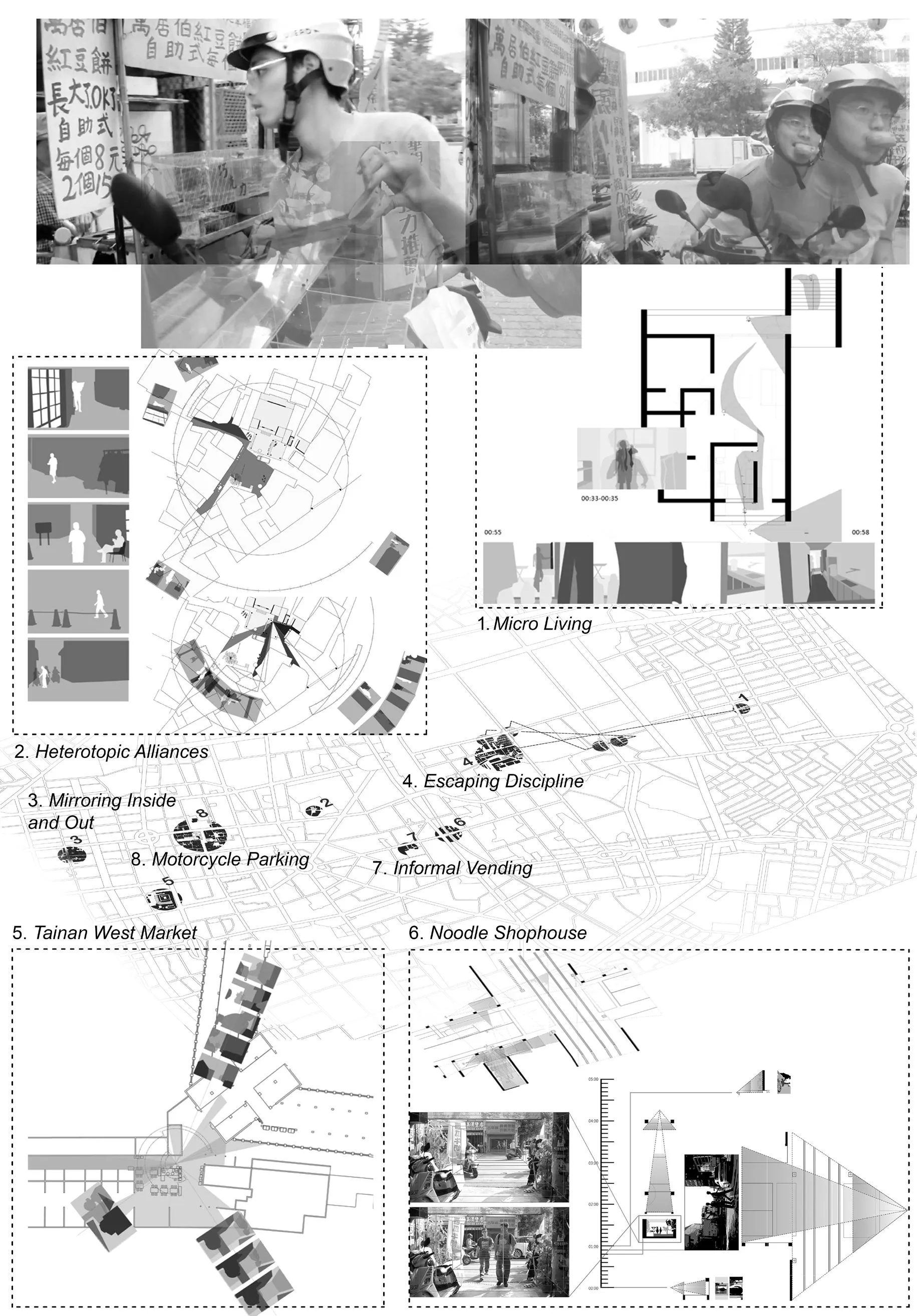
2. Contemporary island studies urge a shift toward island narratives, focusing on the stories of residents rather than those of mainland conquerors.
3. Wen LIU, The mundane politics of war in Taiwan: Psychological preparedness, civil defense, and permanent war, Security and Dialogue (2023: 1-20).
4. Godfrey Baldachino, Studying Islands, 2008.